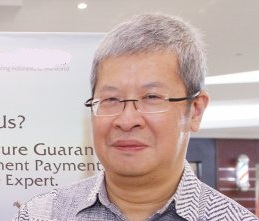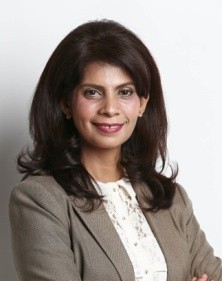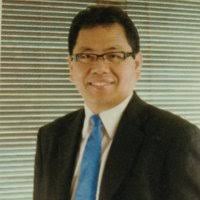Case Document
BKM IN 2002, PRE-PAID ELECTRONIC BALANCE TOP-UP SERVICE WITH EDC (A)
BKM had initiated and orchestrated all the business relationships towards the successful launch and operation of the Telkomsel Autorefill service. The project was initiated back in March 2002 when BKM showed the capability to deliver the voucher-less business to Telkom B2B Project. As a pioneer of providing simPATI prepaid service, Telkomsel faced the challenge to provide huge distribution channels of its prepaid air-time. Jatis, another potential partner for mobile banking solution, presented the proposal to Telkomsel to address the challenge, at the same day when BKM through Telkom B2B Project presented Autorefill Solution to Telkomsel. At the end, Telkomsel’s Marketing Director, Mr. Woerjanto, then agreed to proceed with BKM solution in a five years contract. After long process, a back-to-back contract agreement between BKM to Telkom, and Telkom to Telkomsel was signed on November 25, 2002. Telkom B2B Project was set to prepare a new business on electronic transaction. At that time, Telkom was eager to work on any new business development on non-telephony applications, outside their normal traditional telephony services. Through indirect business relationship, whereby BKM’s proposal sealed with Telkom brand, BKM secured the project over Telkom domination (Telkom had majority ownership share in Telkomsel, 65%). Telkom provided the entire electronic refill application hosting and hardware infrastructure for running the data center operation for Telkomsel Autorefill service.
BKM IN 2002, PRE-PAID ELECTRONIC BALANCE TOP-UP SERVICE WITH EDC (B)
Back in 2002, BKM was just another company in Indonesia struggling to survive and just tried to keep-up to fulfill its operational expenses. It was just only from one project, the BKM – Telkom agreement for the Telkomsel Autorefill Service had turned BKM into a profitable operation in the following year and subsequently in the next years ahead, up until now (2008).
MASSIV: BREAKING THROUGH THE MYTH
This case study is about how the company released new products in a market with a very high level of competition. The launching of the Massiv Green product was a big challenge for Mr. Hadi; consumer buying power fell, the number of imitation products grew, and there was no opportunity to enter the Original Equipment Manufacturing (OEM) market because it was dominated by market leaders who have been in partnership with car makers for decades. The fact, that majority of consumers replace their batteries with the same brand that the car had when it was first purchased, made the situation worse. In situations like these, circulation of myths regarding the existing dominance of these market players is very difficult to penetrate.
In this case participants will learn how companies breakthrough against the dominion of big players who had dominated the market for decades. The process begins with a comprehensive industry analysis, a Marketing Opportunity Analysis (MOA), and the execution of an integrated marketing strategy. We will also learn how a company fills an existing market segment without taking the market of its previous products; critically differentiate products owned by the company to avoid product cannibalism.
BNI INTERNET BANKING: GO OR NOT GO?
Sabdo Trihidayat, General Manager of Consumer Funds and Financial Services Division (DJK-Division) also known as Pak Dody at BNI, as one of Consumer Business Unit after the change of corporate organization structure into the SBU-BU model in 2004 that forced each Business Unit to race with other business units in increasing its performance and compete with rivals as stated on the vision and mission. Before the change of BNI’s organizational structure, there was an Internet-Banking team had created the blueprint of the project and had to postpone as consideration in avoiding the unwanted conflict impact while the IT-Division was implementing the core-banking project in 2005.
In looking forward, to increase market penetration, product development of BNI TAPLUS had been enhanced with a communications marketing program for both above and below the line, to sharpen awareness while communicating advantages on product features and services, stressing their consistency and security. Following market development and technology advances, innovate e-channel products and features (both financial and non-financial) should had been integrated into BNI Internet-Banking. BNI had completed its four e-channel services: ATM since 1990, Phone-Banking since February 1998, M-Banking since 2002, and the SMS-Banking launched on April 4th, 2006. Sabdo Trihidayat faced the situation whether he had to take BNI on Internet-Banking in case of completing the five e-channels and decided whether it was the right time to bring BNI go Internet-Banking and implement the project right after the launched of BNI SMS-Banking?
MAMA ROZ, BLUE OR RED OCEAN ?
Hendrik Setiawan, a young entrepreneur in fresh fruit juice, was preparing for his presentation. He's going to meet potential clients in the next few days. He got various alternatives to promote Mama Roz, a new brand of fresh fruit juice, which displayed some signs of success. Mama Roz was considered as the most saleable fresh fruit juice product in top class supermarkets.
However, he's wondering whether it was appropriate to call his marketing strategy as the blue ocean strategy? His potential client would understand this new concept. And so, he had to be able to present strong evidence that his marketing strategy was indeed blue ocean strategy.
In front of him lies the ethnographic report from Reny Virniati and Nia Kurnianingsih, graduate students of MM Strategic Marketing, Binus Business School. From this report, Hendrik should summarize the evidence from the field, as a resourceful feedback for his marketing strategy.
WIJAYA KARYA (WIKA): DIVERSIFICATION STRATEGY
WIKA started the business from electrical and pipe-installation for houses and buildings, they realized that WIKA would not become a big-corporate if only relied on electrical-business. Now, WIKA’s projects are various from high-rise building, fly-over, toll-road, railway until solar water heater (SWH) and LPG tank. Also WIKA becomes a producer of automotive-component. This was different with other State – Owned Company which usually avoid diversifying from its core-business. The latest diversification was entering the Engineering Procurement Construction (EPC) – business where they believed this would be a future business for WIKA, after preliminary study in 2002, the management decided to enter this high-technology business.
The company plans to acquire toll-road operators as well as engineering consultancy company WIKA claims it has built approximately 30.0% of government-owned 10,000-MW power plant projects. The company plans to acquire a 70.0% stake of PT Catur Insan Pertiwi (CIP), a mechanical engineering and engineering consultancy company specializing in power plants. Going forward, WIKA also plans to acquire toll-road operators and mining contractors, apart from its plan to enter international market. It looks very busy of diversification. What strategies will be implemented to reach the goals? What opportunities and challenges will be experienced by WIKA after diversifying its business? How best could WIKA execute its diversification strategy?
PT BUKAKA TEKNIK UTAMA (A): PASSENGER BOARDING BRIDGE PROJECT
Rahmat Ismail sat in his seat on flight from Honolulu to Jakarta. His mind was racing and filled with the images of various scenes of his meetings and encounters in the past few months. As senior management of Bukaka Teknik Utama (Bukaka), the contractor awarded the contract to provide and install the passenger boarding bridges for Terminal II project at Cengkareng International Airport, Jakarta, he was very uneasy about the latest predicament concerning Bukaka’s technical partner, Jetway Systems (Jetway). Jetway provided engineering design and consultation for building forty-four passenger boarding bridges for new Terminal II at Cengkareng airport. In a recent meeting, Jetway’s and Bukaka’s management sat down to renegotiate fees and division of work between the two companies for the project. The meeting went sour, Jetway management decided to pull-out from the project, leaving Bukaka with no design and a looming deadline.
Having no partner, design, nor the experience of building passenger boarding bridges, Rahmat Ismail knew that there was no way Bukaka could meet project deliverables. Pressured by time, Rahmat Ismail realized that he had several options; including acquiring a new strategic partner or acquired the technology. The latter option of course was more rewarding for company, but more difficult and riskier due to the fact that Bukaka did not have engineering experience in building passenger boarding bridges. In his seat, Rahmat Ismail weighed his options, the credibility and future of Bukaka as an engineering company depended on his decision.
PT INDOSAT TBK. DIVESTMENT PROCESS TO SINGAPORE TECHNOLOGIES TELEMEDIA DID THE GOVERNMENT GET THE RIGHT PRICE?
On 16 December 2002, the Government of the Republic of Indonesia ("Government") declared Singapore Technologies Telemedia Pte., Ltd. ("STT") the winning bidder for the divestment of 41.9% shares of the Government in PT Indonesian Satellite Corporation Tbk. ("Indosat"). STT utilized its subsidiary Indonesian Corporation Limited ("ICL") to purchase the shares. This divestment decision attracted various reactions from the public as well as various institutions within the government.
This divestment process had been long considered by State Minister for the State Owned Enterprise ("Meneg BUMN") a position which was then held by Mr. Laksamana Sukardi, the Minister of Finance ("MoF"), Mr. Boediono, the Indonesian Banking Restructuring Agency ("IBRA") and the Capital Market Supervisory Board ("Bapepam"). To support the divestment process, the Government engaged PT Danareksa Sekuritas and Credit Suisse First Boston ("CSFB") as coordinators for the sale of the shares, particularly as the financial advisor.
One of the reasons the Government decided to dispose of its shares in Indosat was to increase the level of competitiveness of Indosat in the telecommunication sector in Indonesia. Another reason was Indosat’s failure to achieve optimum results despite previous efforts to enhance its performance. However, the main reason was that the MoF had planned to utilize the funds generated by the privatization of State Owned Enterprises (including proceeds from Indosat divestment process) to buy back Recapitulation Bonds from a number of banks.
DEBT RESTRUCTURE: A FINANCIAL TURNAROUND OF PT SIERAD PRODUCE. TBK
It was 1996, when Mr. Budiardjo Tek, the President Director of PT Sierad Produce Tbk (“Sierad Produce / Sierad / The Company”) proudly presented the Company’s achievement, “I am pleased to report that 1996, our first year as a publicly held company, proved to be a highly successful one, with outstanding financial performance recorded across the board. Net revenues for the year amounted to Rp. 454.4 billion (or equal to USD 192.3 million), income from operations totaled Rp. 44.0 billion (or equal to USD 18.6 million), and net income was Rp. 27.1 billion (or equal to USD 11.5 million). With expansion projects now coming on-stream, our poultry feed operation is growing tremendously. Expansion of our feedmill, for example, will result in a tripling of capacity and will allow us to achieve significant economies of scale.”
Not too soon after the situation changed. The Asian monetary crisis beginning in 1997 was sudden and unforeseen. It had been catastrophic for many businesses. All poultry operators – without exception and including the Company – embarked on expansion before the economic crisis in order to take advantage of the excellent prospects of the industry. These expansions were funded in part by new equity issues in the capital markets and in part, through cheap and readily available financing offered by offshore financial institutions. However, due to the profound and lingering effect of the crisis, the consumer purchasing power deteriorated. Rupiah depreciated from its normal rate of Rp. 2.500,- to Rp. 4,500 at year end 1997, soaring to Rp. 17,000 in January 1998 and levelling off at Rp. 10,000 – Rp. 12,000 with much volatility towards end of 1998. At the same time, the poultry industry’s cost of production went up several folds. “More than 80% of feed’s raw materials were imported and therefore, the industry is heavily import-dependent”, said Albert Sitorus, member of Sierad’s management team. Large poultry operators like the Company found themselves with new production facilities, large foreign currency debts, a Rupiah-based revenue stream and worse, over a 50% decline in consumer poultry consumption during the worst period. It was inevitable that the Company would go into default. It was only a matter of time. The Company was unable to pay the USD 313 million debt, which actually was only less than 2 times of its annual revenue before the crisis.
CASH MANAGEMENT REVIEW PT. ANEKA TAMBANG TBK (IDX CODE: ANTM)
This case study illustrates how PT Aneka Tambang Tbk (Antam) manages their cash flows. Antam’s cash was held in over 15 local and foreign banks where mainly was placed in time-deposit and the rest was in the form of cash account. This company used their revenue to pay administrative cost, investment and financing activities such as construction cost, repayment of bonds and dividend. However, the high-cost labour and the increasing of wages have adversely influenced the condition of their cash-flow management. At the same time payment to suppliers has also gradually increasing. As a result, Antam’s liquidity decreased although the debt-ratio has shown some improvement and profitability seems to be flat with a tendency to decline.







